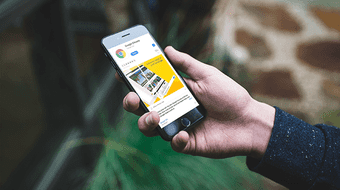If you are sick and tired of Reachability kicking in without you intending it to, or if you have hands that are large enough to make the gesture useless in the first place, then disable it. Let’s check out how. But besides that, I also want to go through a number of other annoying gestures and features that you can tweak or get rid of for a better experience on the iPhone.
Turning Off Reachability on iPhone
The option to disable Reachability is located within the Accessibility settings on your iPhone. On iOS 12 and earlier, you had to head over to iPhone Settings > General > Accessibility to access this setting. But Apple changed things around a bit with iOS 13 onward. So here are the steps to turn off the Reachability gesture on the iPhone. Step 1: Open the Settings app of your iPhone. Afterward, scroll down and tap Accessibility. Step 2: Tap Touch within the Physical and Motor section. Step 3: Turn off the switch next to Reachability. And that’s it. Reachability is now disabled on the iPhone. You can finally switch between apps all you want without pulling down the entire screen in the process! If you want to enable the gesture at a later time, head over to the same location within iPhone Settings > Accessibility > Touch, and then turn on the switch next to Reachability.
Other Annoying Gestures and Features
The iPhone also has many other gestures and features that could bug a lot of you out there. The following isn’t an exhaustive list, but these are a few that I find annoying the most.
Haptic Touch
3D Touch has fallen out of favor on the iPhone. You now get Haptic Touch in its place instead. But if you find Haptic Touch triggering way too quickly when long-pressing an item, you can actually get it to slow down. Go to iPhone Settings > Accessibility > Touch > Haptic Touch. Set the Touch Duration to Slow. You can check if the slower time duration works for you by practicing the gesture on the image within the Touch Duration Test section of the same screen.
Shake to Undo
Just like Reachability, it’s rather easy to trigger the Shake to Undo pop-up box. If you hardly use this feature, then turn it off. Go to iPhone Settings > Accessibility > Touch. Scroll down, and then turn off the switch next to Shake to Undo. Tip: Instead of using Shake to Undo, perform a three-fingered swipe to the left of the screen to undo changes to text.
Motion Effects
The iPhone is full of fancy motion effects. They help make things look good when switching between apps or bringing the app switcher into view, for example. But after a while, these motion effects get old and make a lot of gestures rather wobbly to perform. Why not just cut to the chase and remove them? I find my iPhone (and also my iPad) to be much snappier with these motion effects disabled. Go to iPhone Settings > Accessibility > Motion. Turn on the switch next to Reduce Motion. Additionally, you can reduce motion effects when sliding back and forward between screens in apps — enable the switch next to Reduce Cross-Fade Transitions.
Control Center
The Control Center provides access to a bunch of useful controls. But it’s accessible from just about everywhere — including the Lock screen. Not only can this trigger stuff accidentally, but it also poses issues to your iPhone’s security. To disable Control Center access on the Lock screen, go to iPhone Settings > Face ID/Touch ID & Passcode. Scroll down to the Allow Access When Locked section, and then turn off the switch next to Control Center. You can further restrict the Control Center to just the Home Screen — go to iPhone Settings > Control Center, and then turn off the switch next to Access Within Apps.
Haptic Feedback
The iPhone provides haptic feedback when interacting with certain UI elements — such as a scrolling date picker — courtesy of the built-in Taptic Engine. But having to go through these vibrations each time I wanted to set recurring reminders in Google Tasks, for example, just got the better of me. Go to iPhone Settings > Sound & Haptics. Scroll down, and then turn off the switch next to System Haptics. That should disable those annoying vibrations for good.
Unreachable
The Reachability gesture didn’t annoy me on the older iPhones with Touch ID. But the way that it’s set to trigger on iPhones with Face ID is finicky at best. You can’t really blame Apple. I can’t think of any other location to implement the gesture. But on the brighter side, it’s just so easy to disable. Next up: Is your iPhone deleting apps accidentally without your permission? Here’s what you can do to stop that. The above article may contain affiliate links which help support Guiding Tech. However, it does not affect our editorial integrity. The content remains unbiased and authentic.


















